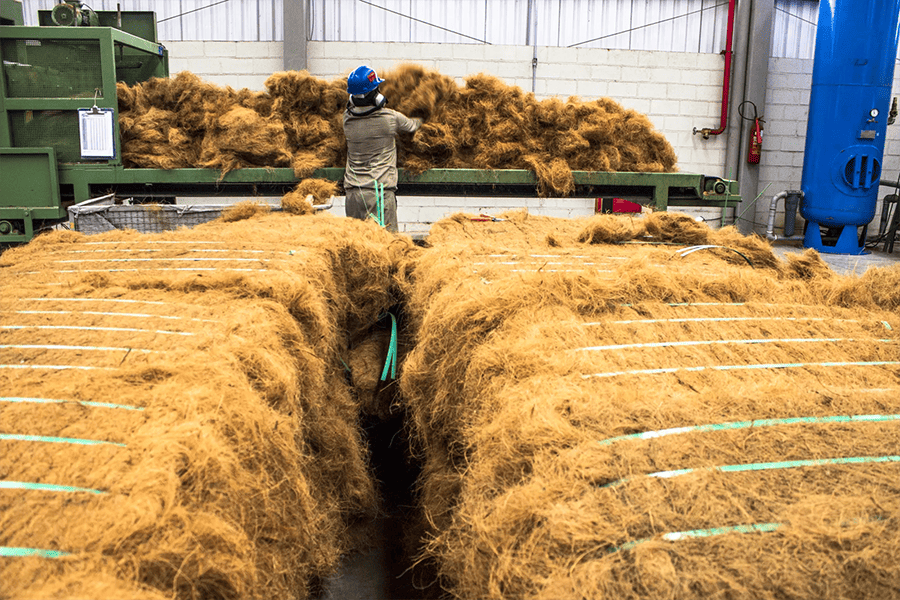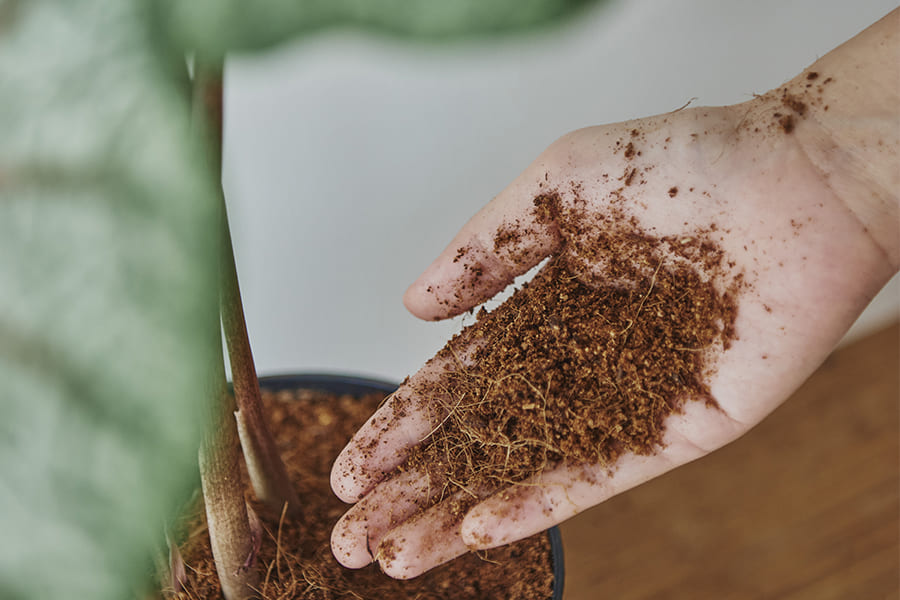BLOG POSTS & ARTICLES
Coco Coir: Crafting the Future of Urban Gardening

In today's rapidly evolving world, the pursuit of food security and sustainability has become an increasingly pressing concern. As global populations continue to grow, the delicate balance between meeting nutritional needs and safeguarding the planet's resources is at risk. Simultaneously, urbanization is reshaping the landscape, with cities expanding at an unprecedented rate. This urban sprawl brings with it a profound challenge: how to provide nourishing food to populations living in densely populated urban areas.
The surge of urbanization has led to the diminishment of green spaces, leaving little room for traditional agricultural practices. This phenomenon necessitates a paradigm shift in how we think about food production. The answer lies in embracing novel approaches that maximize the use of limited space while maintaining a sustainable and efficient food supply. Here, the spotlight turns to urban gardening and community agriculture. These endeavors leverage available pockets of land to cultivate fresh produce, fostering self-reliance and local food production. However, the key to their success lies in the choice of growing medium, and this is where coco coir comes into the game.
Coco coir, a natural and versatile substrate derived from coconut husks, has emerged as a game-changing element in urban gardening and community agriculture. Its significance extends far beyond its seemingly humble origin. Its exceptional properties position it as a pivotal tool in addressing the challenges posed by modern food security and sustainability. From limited space to water scarcity, soil degradation, and the demand for chemical-free produce, coco coir offers a multifaceted solution that transcends traditional gardening limitations.
In the following sections, we will delve deeper into the ways in which coco coir transforms urban gardening from a mere concept into a thriving reality, shaping the future of agriculture.
Urbanization and coco coir
Traditional soil's limitations in urban settings have paved the way for coco coir's prominence. Derived from coconut husks, coco coir offers a lightweight and space-efficient alternative. Its fibrous structure fosters water retention, root aeration, and nutrient absorption, making it ideal for maximizing small spaces. From balconies to vertical gardens, coco coir's adaptability empowers urban gardeners to create flourishing green havens.
As urbanization shrinks available land, the synergy of urban gardening, community agriculture, and coco coir becomes a beacon of sustainable growth. Through these practices, cities can not only address food security challenges but also cultivate a stronger sense of community and connection with nature.
Water Scarcity and Efficient Resource Use
As water resources grow strained, embracing coco coir as a water-efficient growing medium aligns with our collective responsibility to steward precious resources. Its integration into urban gardening not only safeguards water but also supports the cultivation of vibrant, resilient communities in an era of increasing environmental challenges. Coco coir enables thriving green spaces with significantly less water. This tangible impact showcases coco coir's role in addressing water scarcity while fostering sustainable urban agriculture.
Chemical-Free
Traditional agriculture relies on chemical fertilizers and pesticides, but coco coir's natural properties eliminate this need. Its fibrous structure ensures optimal drainage and aeration, promoting healthy plant growth without resorting to synthetic additives.
By integrating coco coir into urban gardening, cultivators contribute to chemical-free, locally grown produce. This aligns with the essence of urban gardening – a sustainable, health-conscious endeavor that empowers communities to reconnect with their food sources.
Reducing Food Miles and Carbon Footprint
"Food miles" – the distance food travels from source to table – significantly impacts the environment. Community agriculture, empowered by coco coir in urban settings, offers a remedy.
Local food production through community agriculture slashes food miles. This, coupled with coco coir's role, cultivates sustainable solutions. Its adaptability fuels rooftop and vertical gardening, reducing the need for extensive land use. By embracing these practices, urban areas curtail carbon emissions and foster a direct link between producers and consumers.
Picture cities adorned with rooftop gardens and vertical planters, flourishing with the help of coco coir. This transformation epitomizes eco-consciousness and showcases how small choices can yield significant reductions in our carbon footprint.
Tips and Techniques:
Rehydrating Coco Coir Blocks/Bricks: Begin by soaking compacted coir blocks in water. Witness them expand and then fluff the coir for even moisture distribution, preparing it for planting.
Mixing Ratios with Other Materials: Balancing coco coir with perlite or vermiculite (70% coir, 30% other material) enhances aeration and drainage, customizing your growing mix.
Managing Nutrients: Since coir lacks nutrients, use a water-soluble fertilizer with micronutrients. Regular monitoring and adjustments ensure your plants receive proper sustenance.
Watering Practices: Coco coir retains moisture without waterlogging. Water when the top layer is dry, allowing some runoff to prevent overwatering and maintaining nutrient balance.
Sourcing Quality Coco Coir Products: As the popularity of coco coir increases, the market is flooded with various options, not all of which meet the required standards. Inconsistent quality can impact plant health and overall yields.
To overcome this challenge, it's crucial to source coco coir from reputable suppliers or brands like Plantbest that adhere to quality control measures. Products need to be properly processed, washed, and buffered to remove excess salts.
Conclusion:
Through the lens of coco coir, we've explored a myriad of benefits that urban gardening and community agriculture bring to the table. From addressing limited space and water scarcity to mitigating the impact of climate change and reducing food miles, the transformative potential of these practices is undeniable. Coco coir, with its water-retaining properties and adaptability, serves as the cornerstone of this transformation, empowering us to reimagine urban landscapes as thriving hubs of sustainability.
Coco coir reminds us that even in the concrete jungles we've built, the potential for growth and sustainability remains limitless. Happy Gardening!












__(3).jpg)








